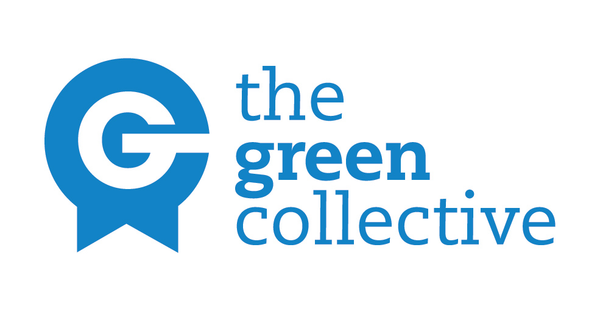
Do tissues give you acne?
You have a cold, and reach for the tissue box to catch the drip. How many times a day have you done that, or how many times tending to your families noses?
The tissue aisle is full of choice. Soothing aloe, scented eucalyptus or vitamin E promoting wellbeing and offering ultra soft comfort. So, what ingredients make these tissues appealing to customers? Let's dig a little deeper into what they contain.
 .
.
What are the ingredients in tissues?
Blow your nose, not the environment 🤧
Let’s challenge your use of tissues and serviettes.
It takes years to make one tissue, but it takes just a few seconds to use it before it’s thrown away. It’s estimated you blow your nose 1233 times a year for an average adult. Scale that to a global population and the numbers are huge.
Tissues are terrible for the environment. Many are made from 50% virgin timber and contain irritating additives. The more ingredients and moisturising they feel, the longer the ingredient list including sulphates, petroleum, isopropyl palmitate, well known pore cloggers and skin irritants.
For those reasons, you can not compost most tissue brands. The bleach and additives in each tissue would kill the delicate microbes in your compost bin. You can not flush, throw or compost and therefore almost every tissue is landfill.
For most of human history we have carried around the multi-purpose cloth. Incredibly versatile for hay fever, sweat, dust, spills, shade, tears, takeaways, glasses cleaner accessory or mini towel.
With so many uses it’s quite shocking that we have almost eradicated it from our everyday lives.
If you have replaced your paper towels with reusable cloths like our SPRUCE Swedish dishcloth, it’s time to rethink tissues next. Kleenex cannot compete with the nostalgia, keepsake and fashion of a HANK.
I have seen so many used tissues scrunched on desks, tucked in pockets, shredded in washing machines. There are simply so many jobs where a handkerchief is more versatile, durable and soft.
After a wash they are hygienic again, just like underwear, towels or clothing. Think back to people’s initial reactions to period underwear. Now mainstream and widely used across all ages, the idea of washing an item for reuse that was considered ‘icky’ is not the barrier anymore.
We are more conscious consumers nowadays, looking into our skincare and sunscreen to see the ingredients. Have you looked deeper into the simple tissue?
Ever wondered why there is no ingredients list on the tissue box or packaging itself? Let us start by asking how the tissue is so soft. Let's discuss the extra chemicals added to appeal to shoppers.

For example, Kleenex Tissues:
Containing Mineral Oil, Ceresin, Stearyl Alcohol, Isopropyl Palmitate, Dimethicone, Aloe Extract and Tocopheryl Acetate (Vitamin E).
Liz Thompson has looked deeper into this for us. Especially concerned about the pore-clogging ingredients in the ultra-soft options. "Mineral oil is the main ingredient and is made from petroleum. It does make the tissues feel like they are moisturising to skin, but petroleum forms a barrier on top of skin and is definitely a pore clogger. It also comes with a host of health related issues.
Second on the list is ceresin wax, another petroleum-derived ingredient shown to cause skin irritation in some skin types. Next up is isopropyl palmitate, a combination of isopropyl alcohol and palmitic acid used to make products feel emollient, and another comedogen. And then we have the ever popular dimethicone, commonly used in mainstream cosmetics to give that slippery feel associated with moisturizing products. This silicone-based polymer clogs pores and irritates many skin types.
Stearyl alcohol is often used in cosmetics as a way to hydrate skin while offering astringent properties good for acne prone skin. It is touted as gentle and non-irritating, but this ingredient has been shown to cause redness, irritation, and inflammation in sensitive skin.
Okay, so the lotion tissues do include vitamin E and aloe, both good for soothing skin. But let’s take a closer look. Tocopheryl is vitamin E, but when mixed with the chemical acetic acid (to form tocopheryl acetate) it actually becomes a skin irritant. Aloe is the last ingredient, and you label readers know that means it makes up the least amount of the total ingredients.
Instead of caring for your delicate skin, these tissues harbour ingredients that clog pores and cause irritation. Not good."

So what tissue options that are safe, sustainable and affordable?
1. Opt for plain tissues without added benefits. Choose to use a natural balm or salve instead to soothe your skin. Unfortunately tissues made from recycled paper sound appealing but have had more processing and the varieties we have trialled are still rough on the skin.
2. Handkerchiefs. Choose soft natural materials. Organic if possible. They can feel like a heavenly relief for tender, red or chapped skin. Maybe more expensive up front but pay for themselves quickly against the cost of tissues.
3. Make your own cotton or flannel wipes from soft, worn clothing. Stay away from the fabric softeners to keep them free from any additional chemicals.

